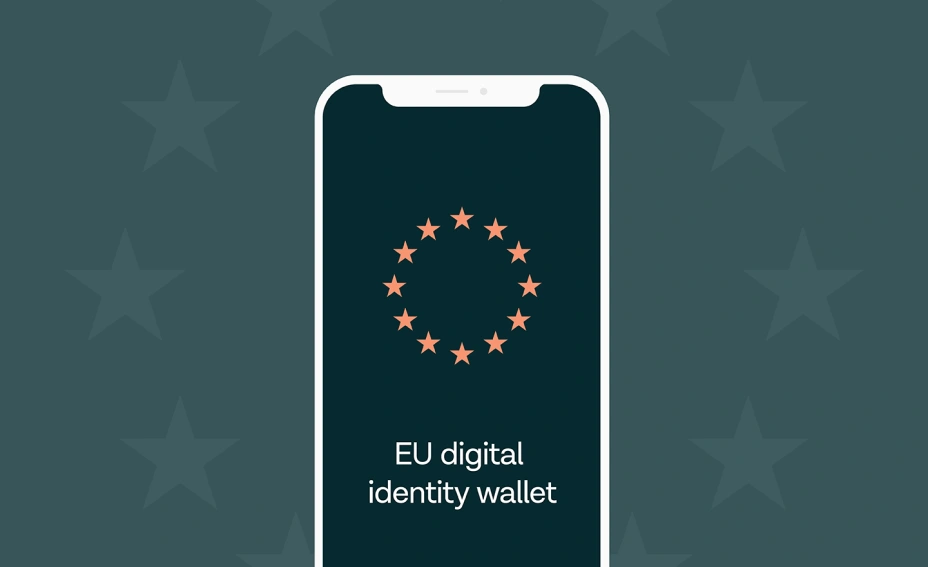How the EU digital identity wallet could change the way we pay

Keeping a physical wallet on your person may already be a foreign concept for some, and could soon be a thing of the past for everyone in Europe. With the coming of the European Digital Identity Regulation, the advent of the European Digital Identity Wallet (EUDIW) isn’t far off. But what actually is it, and what does it mean for the digital payments landscape?
The eIDAS initiative is rolling out the eIDAS 2.0 regulation, which includes the introduction of EU digital identity wallets (EUDIW) for secure storage and sharing of personal and financial information.
The EUDIW will be issued by all EU member states and will enable consumers to securely store and share their personal and financial information across borders – streamlining cross-border transactions and reducing unnecessary paperwork.
This is expected to revolutionise the digital payments landscape, paving the way for more widespread adoption of open banking payments.
Since its inception, the European Union has been dedicated to creating a single market that is convenient for the citizens and businesses of its member states. As part of this, the EU has a vision to create a secure, user-friendly digital market, and one of the key ways it aims to achieve this is through the digital identity initiative. And with the EUDIW on the horizon, the future for payment initiation services (PIS) in Europe looks brighter than ever.
This is mainly because two years after the enforcement of the European Digital Identity Regulation, member states will be expected to offer and support the usage of the EUDIW – a digital service that securely stores and manages people's identity and authentication documents, such as passports and IDs. By providing a secure, convenient, and seamless way for consumers to use and prove their digital identities domestically and across borders, the EUDIW could enhance the user experience for Know Your Customer (KYC) processes, optimise strong customer authentication (SCA) journeys, and minimise unauthorised payment fraud.
But what actually is the initiative behind the wallet? Let’s recap.
eIDAS and the EUDIW – 101
The European Digital Identity Regulation is often referred to as ‘eIDAS 2.0’ because it is considered the successor to the Electronic Identification, Authentication and Trust Services (eIDAS) regulation, which is a standard framework for digital identity, qualified signatures, and trust certificates. Launched in 2014, eIDAS is designed to provide a framework for secure and seamless cross-border electronic transactions within the EU.
While eIDAS is already widely used in some countries and industries – for example when people sign their tax forms or contracts online, but also when Tink identifies itself towards a bank when delivering its open banking services – the current regulations have their limitations as existing national digital identity services are rarely compatible across borders or accepted by businesses. To address this, the European Commission proposed an update which was agreed by co-legislators at the end of last year:
"The European Council calls for the development of an EU-wide framework for secure public electronic identification, including interoperable digital signatures, to provide people with control over their online identity and data as well as to enable access to public, private and cross-border digital services."
Seamless identification across borders
The European Digital Identity Regulation will be supplemented by a number of so-called Implementation Acts which will specify how the EUDIW is intended to work across industries.
Under the new Regulation, each EU member state will be required to issue at least one EUDIW within 24 months of the Implementation Acts being adopted. What’s more, with the exception of small and medium-sized businesses (SMB), where strong user authentication for online identification is required by law or contractual obligation, relying parties must accept the EUDIW no later than 36 months after the entry into force of the Implementing Acts.
With the outlook that the Regulation will appear on the EU statute book before the European elections of 2024, we should anticipate widespread industry acceptance of the EUDIW by 2028.
Next, let’s dig deeper into why a EUDIW that works across borders in the EU matters to payments.
A secure, digital identity wallet for everyone
The EUDIW must be accepted as an authentication mechanism by all relying parties required to identify the identity of the customer by law or contractual obligation.
This means financial institutions that are required to perform SCA will also be required to accept the customer’s choice to use the EUDIW to authenticate themselves when applying for a loan, opening a new bank account, requesting a new card, accessing their account online, and even when initiating a payment.
EUDIWs should be designed to leverage multiple factors and elements of security in intuitive ways – such as biometric information as an element of inherence (e.g. FaceID or fingerprint), device attestations as an element of possession (e.g. app on smartphone), or a personal identification number (PIN) as an element of knowledge.
By designing EUDIWs to optimise the authentication journeys, for instance by using biometric recognition, it should be much easier for consumers to make use of open banking services under PSD2. For instance, in markets where consumers can already do this, Tink’s internal dashboards show that less than 5% of users abandon the authentication flow after requesting an account information service or payment initiation service. These markets also find the lowest rates of unauthorised payment fraud in the world, according to VisaNet Global 3D Secure statistics.
What’s more, the EUDIW could significantly reduce unauthorised payment fraud. In countries such as Sweden and Norway, where digital identity services can be used to authenticate the payer during an online transaction, the industry has seen some of the lowest fraud rates according to VisaNet.
Indeed, the move towards EUDIWs could eventually relieve banks from needing to build, maintain and provide support for their own authentication mechanisms. In markets such as Sweden, it is already common practice for banks to prime users to log in to their payment accounts using their national digital identity, known as BankID.
EUDIW may revolutionise payments as we know them
The EU Digital Identity Wallet has the potential to change the digital payments landscape in Europe. In the end, EUDIWs may replace ID cards, virtually eliminating the need for physical documents like passports, visas, or boarding passes. In short, the EUDIW could make both shopping and travel far more seamless than ever before. And at Tink, we can see how this leads to more widespread adoption of seamless and secure payment options like Pay by Bank – options that will be even easier to use with the coming digital identity wallets.
—
Case studies, statistics, research and recommendations are provided “AS IS” and intended for informational purposes only and should not be relied upon for operational, marketing, legal, technical, tax, financial or other advice. Visa Inc. does not make any warranty or representation as to the completeness or accuracy of the Information within this document, nor assume any liability or responsibility that may result from reliance on such Information. The Information contained herein is not intended as legal advice, and readers are encouraged to seek the advice of a competent legal professional where such advice is required.
More in Open banking

2025-11-20
3 min read
Tink powers the UK’s first cVRP transaction with Visa A2A
In partnership with Visa, Kroo Bank, and Utilita, we’ve just helped demonstrate the UK’s first commercial variable recurring payment (cVRP) using the Visa A2A solution – and it’s a big step forward for how people make regular payments.
Read more

2025-06-09
11 min read
The case for “Pay by Bank” as a global term
Thomas Gmelch argues that "Pay by Bank" should be adopted as a standard term for open banking-powered account-to-account payments to reduce confusion, build trust, and boost adoption across the industry.
Read more

2025-06-02
3 min read
Tink joins Visa A2A – what it means for Pay by Bank and VRP
Visa A2A brings an enhanced framework to Pay by Bank and variable recurring payments (VRP) in the UK, and Tink is excited to be one of the first members of this new solution.
Read more
Get started with Tink
Contact our team to learn more about what we can help you build – or create an account to get started right away.
